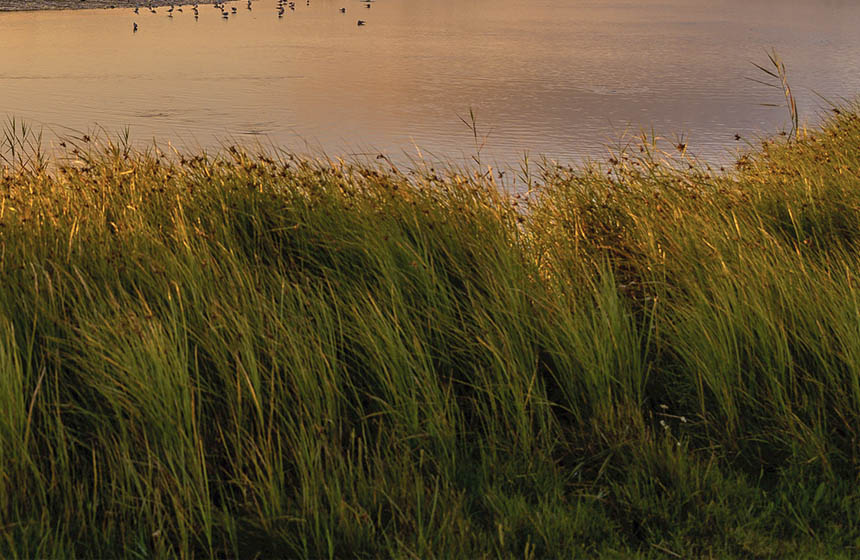Restoration of wet grassland, reedbed, and fen in the Greylake Nature Reserve
Conversion of arable farmland to wet grassland, reedbed, and wet fen aims to restore biodiversity in the Greylake Nature Reserve and increase the area’s carbon storage potential and adaptive capacity in the face of flooding.
Nature-based Intervention:
Starting in 2003, the Royal Society for the Protection of Birds took over what is now called the Greylake Nature Reserve, converting 110 hectares of arable farmland to wet grassland, reedbed, and wet fen. The landscape is managed through tactical cattle grazing in the summer and water level management throughout the year to create the right conditions for wintering and breeding birds. Water level management included the creation of a constellation of 26,000 metres of gutters and ditches.
Overview of context and outcomes:
This mix of habitats attracts a wide variety of bird, mammal, plant, insect, and reptile species. Several species that rely on the ditch edge habitat have since returned including 137 aquatic invertebrates and 47 wetland insects.
Case effectiveness on
Climate change
Although not quantified, the structures installed to raise water levels by eighty centimetres are predicted to have increased the amount of carbon stored in peat.
Structures installed to raise water levels have an estimated capacity of up to 1.1 million cubic metres of water at times of peak flood, an important adaptive buffer in the face of climate change.
Ecosystem health
Ecological effect: PositiveSeveral species previously reported as declining or absent from the area have been observed in growing number on the reserve. For example, monitoring has shown that the once declining Lapwing population is now starting to recover.
Socioeconomic outcomes
The nature reserve has reported hosting tourists year-round.
Governance
The site is actively governed by the RSPB which works to manage low intensity cattle grazing and water levels throughout the year.
Finance
The RSPB is the main source of funding and took over the farmland site which had previously been the Shapwick Alloments, dating back to 1800.
Monitoring and evaluation
The RSPB conducts biodiversity modeling with a focus on birds at the site.
Trade-offs and limitations
No information yet available on tradeoffs.

Intervention type
- Management
- Protection
- Restoration
Ecosystem type
- Temperate grasslands
- Wetlands
Climate change impacts addressed
- Freshwater flooding
- Reduced water quality
Instigators
- National conservation/environment organisation
Societal challenges
- Biodiversity conservation
- Climate change adaptation
- Climate change mitigation
- Disaster risk reduction
Outcomes
- Food security: Not reported
- Water security: Not reported
- Health: Not reported
- Local economics: Not reported
- Livelihoods/goods/basic needs: Not reported
- Energy security: Not reported
- Disaster risk reduction: Positive
- Rights/empowerment/equality: Not reported
- Conflict and security: Not reported
- No. developmental outcomes reported: 3
Resources
Read resource 1Read resource 2
Read resource 3
Literature info
- Grey literature



